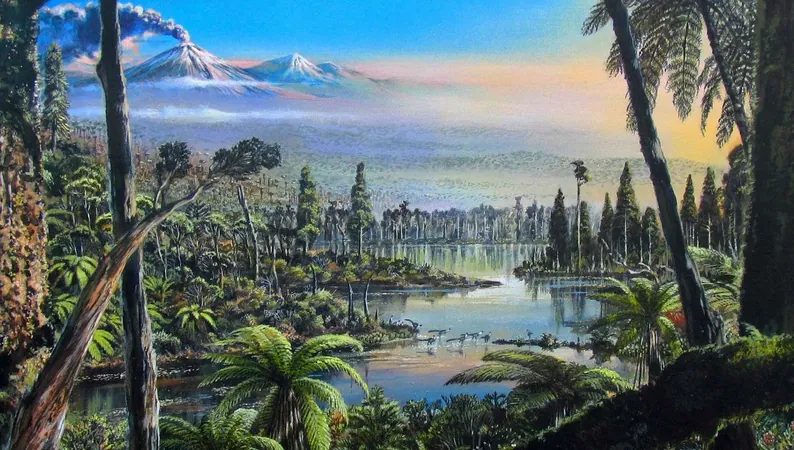
Unearthed Wonders: Antarctica's Rainforest Past and the Dinosaurs That Roamed It 90 Million Years Ago!
2025-01-08
Author: Sarah
Introduction
Imagine a world where Antarctica was once a vibrant rainforest, teeming with life! Only 90 million years ago, this frozen wilderness was dramatically different—abounding with lush ferns and towering conifer trees instead of its current icy desolation.
Groundbreaking Discovery
A groundbreaking discovery made by scientists from the Alfred Wegener Institute in Germany and Imperial College London revealed this ancient paradise when they conducted core drilling in West Antarctica, approximately 900 kilometers (559 miles) from the South Pole. The results, reported back in 2020, unveiled a 90-million-year-old sample of soil brimming with preserved roots, pollen, and spores. This makes it abundantly clear: the continent was once a lush habitat brimming with a diverse array of plant life!
Insights into the Ancient Climate
What makes the findings even more fascinating? Antarctica today endures four months of total darkness during winter, leading many to wonder how such a rich ecosystem could thrive in such extreme conditions. “The preservation of this 90-million-year-old forest is exceptional, but even more surprising is the world it reveals. Even during months of darkness, swampy temperate rainforests were able to grow close to the South Pole,” said Professor Tina van de Flierdt from Imperial. This insight indicates a warmer, humid climate than previously thought.
Temperatures and Sea Levels
Researchers have postulated that average temperatures during the mid-Cretaceous period hovered around 12 °C (54 °F), likening it to the temperate rainforests of modern-day New Zealand. This era was notorious for being the hottest in the last 140 million years, with sea levels soaring about 170 meters (558 feet) higher than they are today, creating expansive coastlines and thriving marine environments.
The Dinosaurs of Antarctica
However, the real stunners are the dinosaurs themselves! The Cretaceous Period (145 to 66 million years ago) marked a peak in dinosaur diversity, with famous species like Tyrannosaurus rex and Triceratops dominating the landscape. Recent paleontological excavations in Antarctica have uncovered numerous dinosaur fossils, piecing together a riveting story of these giants that once called the icy land home. Surprisingly, it's still uncertain how large creatures managed to endure through months of polar night; they may have migrated during the winter seasons or developed unique survival strategies.
Present-Day Antarctica
Fast forward to today, and Antarctica is not particularly renowned for its plant diversity. Currently, only two vascular plant species—Antarctic hair grass and Antarctic pearlwort—are native to the region. Nevertheless, rising temperatures are causing these hardy species to thrive, with more than 100 non-native plant species making an invader's debut on the icy continent.
The Future of Plant Life in Antarctica
Could we be witnessing the resurrection of plant life in Antarctica? As climate change continues to reshape Earth's landscapes, the past may echo back to life in unexpected ways. Who knows what other secrets this frozen continent holds as we peel back the layers of its historical enigma! Stay tuned for more astonishing revelations!
 Brasil (PT)
Brasil (PT)
 Canada (EN)
Canada (EN)
 Chile (ES)
Chile (ES)
 Česko (CS)
Česko (CS)
 대한민국 (KO)
대한민국 (KO)
 España (ES)
España (ES)
 France (FR)
France (FR)
 Hong Kong (EN)
Hong Kong (EN)
 Italia (IT)
Italia (IT)
 日本 (JA)
日本 (JA)
 Magyarország (HU)
Magyarország (HU)
 Norge (NO)
Norge (NO)
 Polska (PL)
Polska (PL)
 Schweiz (DE)
Schweiz (DE)
 Singapore (EN)
Singapore (EN)
 Sverige (SV)
Sverige (SV)
 Suomi (FI)
Suomi (FI)
 Türkiye (TR)
Türkiye (TR)
 الإمارات العربية المتحدة (AR)
الإمارات العربية المتحدة (AR)